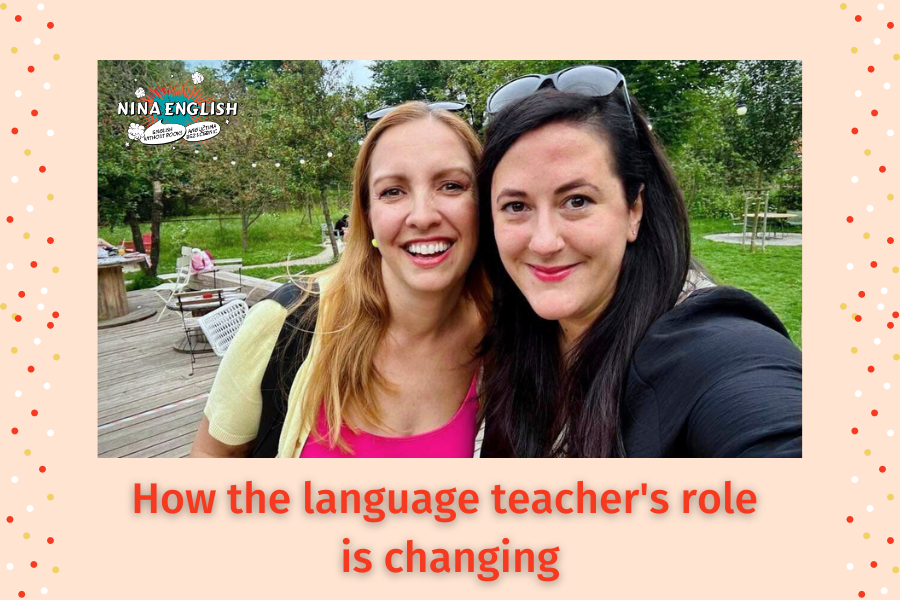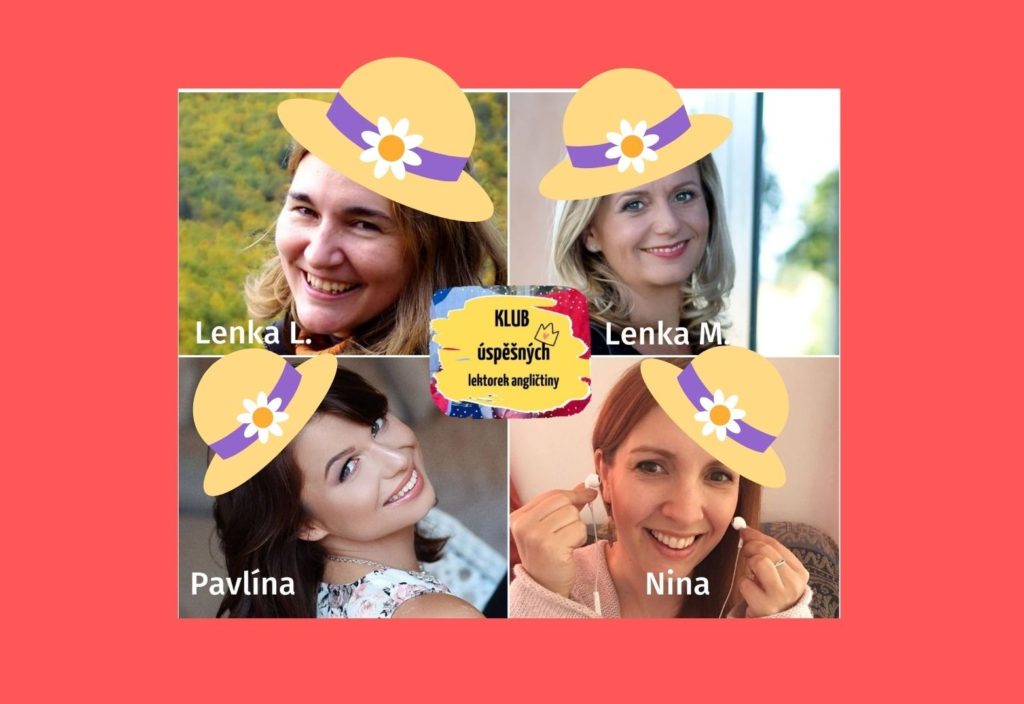
Things are stirring in education, the ice is breaking, and the pandemic gave it a real push. Digital tools are finally getting fully integrated into teaching, with a big focus on autonomy and asynchronous learning — for both kids and adults.
Naturally, this is also shaking up the student-teacher relationship. The teacher is shifting more towards being a coach, mentor, or advisor… while the student is becoming an independent learner, fully aware that no one else can do the learning for them.
This change, which has been brewing in alternative education circles for decades, is finally hitting the mainstream, and it’s happening fast. If you’ve been following my work, you know I’m thrilled about this shift.
So, let’s dive into the changing role of teachers in language education.
As language teachers, we wear a bunch of different “hats” depending on what our students need. Sometimes it’s the teaching hat, other times it’s the mentoring or coaching hat.
But we’re never just one thing. We switch roles, or “hats,” throughout lessons and courses. These roles blend and overlap, and that’s totally fine! But it’s helpful to know when we’re wearing which hat.
Here’s how I and my colleagues on the Nina English team, who also mentor in the Club For Successful ELT Entrepreneurs, see these different roles, or “hats”:

Nina: I put on my teaching hat when I’m explaining something from the position of an expert, like how conditional sentences work or when to use the present perfect tense. My job here is to make sure the student understands the material. I’ve got various techniques, exercises, and strategies to help with this, and I decide what needs to be taught when and what to practice. I build on what we’ve already covered and keep things structured and planned so we can accomplish everything. As a teacher, I’m often held accountable for my students’ results. If they struggle, it reflects on me. This is one reason why more teachers are embracing the role of a coach, we want our students to take responsibility for their own progress.
Lenka Ludvíková: A teacher is the guide. They go along with the learner and show the possibilities, explain the patterns, and prepare situations to practice what they are learning together.
Lenka Málková: A teacher is a person educated in their field who passes on the knowledge acquired. The teacher plans what information to pass on, how to pass it on, and how to evaluate the learning process. The teacher as an authority, stands over their student. Motivational and educational aspects are often part of their work.
Pavlína Gromanová: A teacher inspires, motivates, creates a safe space. They have a plan and choose different versions to fit the challenge and content of what the student needs. The teacher is an expert but does not claim to know everything at all costs. But they are not just an expert! They must have a solid didactic foundation. They are personal and fair, able to impress and convey their knowledge. They are playful, creative and give the student the space to be as active as possible, because they know that passive acceptance of knowledge is useless. The teacher walks alongside the student, helping them to stand up when they can no longer, adjusting the pace and methods so that together they reach the finish line.
Nina: When I put on my coaching hat, I don’t teach or tell the student what to do. I don’t assign tasks, but I guide them to figure things out for themselves through questions. We call this “self-discovery.” We boost motivation by setting language goals, exploring different strategies to reach them, and setting up accountability to keep the student moving forward — all through asking good questions. As a coach, I don’t need to be an expert in the subject, but as a language coach, I should know the language at least one level above the student. But I don’t need to be an expert in their specific field (like technical English). As a coach, I don’t share what worked for me or others — I don’t give solutions. That’s more of a mentor’s role.
Lenka Ludvíková: A coach is the one who questions and helps the student find the best and most effective path in learning. They ask questions that move the student along, help uncover blind spots, and reveal the truth about learning for the student themselves. The desired result is personalized learning, tailored to the student’s needs, experience, motivation, skills, etc.
Lenka Málková: A coach is a partner who stands by your side with the belief that you have all the answers to your problems within yourself. So all you need to do is find those answers with the right coaching questions. A coach will help you find the right path and focus your goal. A coach does not advise, so they do not need to be a expert in the subject. They are an expert in coaching techniques, an empathetic person, skilled in communicating with others, with the ability to remain unbiased and focus only on the needs of the coachee. Coaching offers AHA awareness and a lasting change in attitude.
Pavlína Gromanová: A coach is the master of questions! He doesn’t have to be an expert because he doesn’t pass on his knowledge. The coach listens and, by using appropriate questions, gives the client plenty of time to think, evaluate, prioritize, set goals, and determine specific steps to take to achieve the desired goal. The coach is a guide on the path to self-discovery, and can bring perspective back to a hopeless situation. It does not set the pace or the content. The coach listens attentively, noticing needs, but does not teach or instruct anyone himself. A coach helps to rediscover or refresh inner motivation. With sensitively chosen questions, they reveal possibilities, give them a concrete outline, but leave the responsibility for progress entirely in the hands of the client.
Nina: When I’m a mentor, I’m someone who shares “wisdom.” I explain how I got to where I am now, what worked for me, or what’s worked for others in similar situations. Instead of telling the student exactly what to do (like a teacher), I suggest tried-and-true practices and recommend what I know is effective. It’s like being an older, more experienced friend who offers advice and shares resources. Unlike coaching, which is usually focused on a clear goal, mentoring can be a longer-term collaboration.
Lenka Ludvíková: A mentor passes on the experience. In languages, this is either experience of learning the language(s) or experience of the language and communicating in it. It then depends on what the mentor and mentee agree and focus on together. And the question is to what extent the mentor should have mastered the target language (e.g. experience of learning Japanese is probably not exactly the same as learning Spanish).
Lenka Málková: A mentor is an expert in the field with many years of experience, skills and knowledge. The mentor shows different ways to solve a problem based on their experience. The mentor answers the questions that are bothering you and offers different solutions. It is then up to you personally to choose which of these options you want to choose.
Pavlína Gromanová: A mentor knows more than the client. He has been through a similar journey and uses their experience to help the one who is yet to take that journey. They show what has worked them, impart methods and techniques to make the process as smooth as possible. Unlike a coach, a mentor makes full use of their own experience, which they share openly.
Nina: I wear my therapist hat when I focus on the past and help a student work through and overcome previous issues, so they can move forward. In English, this role is often called counseling. As a counselor, I help the student gain insight into their process by actively listening, reflecting, and clarifying. I don’t give advice or try to solve the problem. Like in coaching, I help the student find their own answers. I use this hat, for example, when I talk with a student about their blocks in understanding native speakers and we dive into some psychology.
I’m wearing my trainer hat when I’m helping a student develop a particular skill. For example, working on public speaking for business presentations or how to use the phone properly as a hotel receptionist. Or when I’m practicing a job interview with a student.
Tutoring is similar to teaching but in a more one-on-one setting, rather than in a classroom. A tutor helps the student understand the material they’re learning in school with extra exercises, and unlike a teacher, works individually with the student. I started tutoring when I was a student myself; it’s something high school and university students often do to help younger classmates. It’s seen as a side job, and therefore usually the least expensive option.
And how about your hats? Do you ever talk about it with colleagues or friends? What about clients? What do they most often call you?
I’d love to hear from you!
Nina
🌟 The magic of language coaching
🌟 How to choose your English language coach?